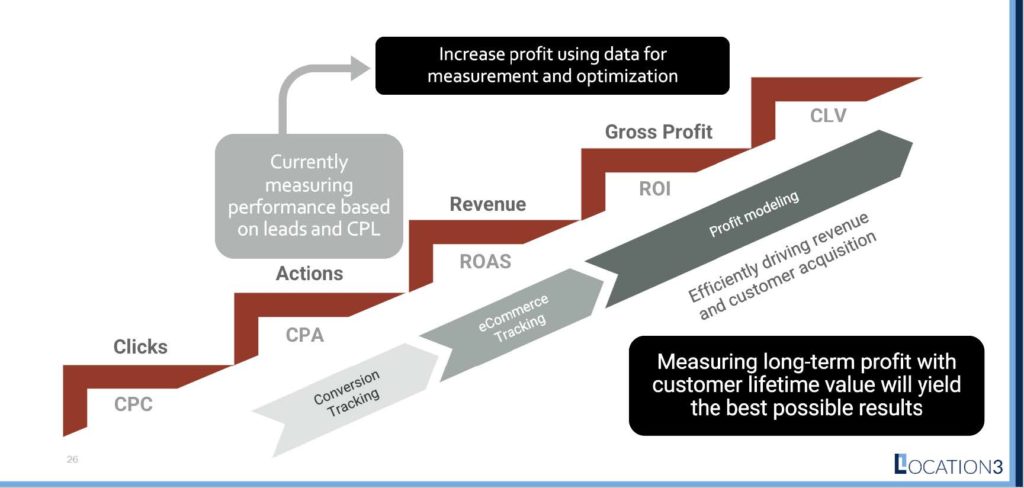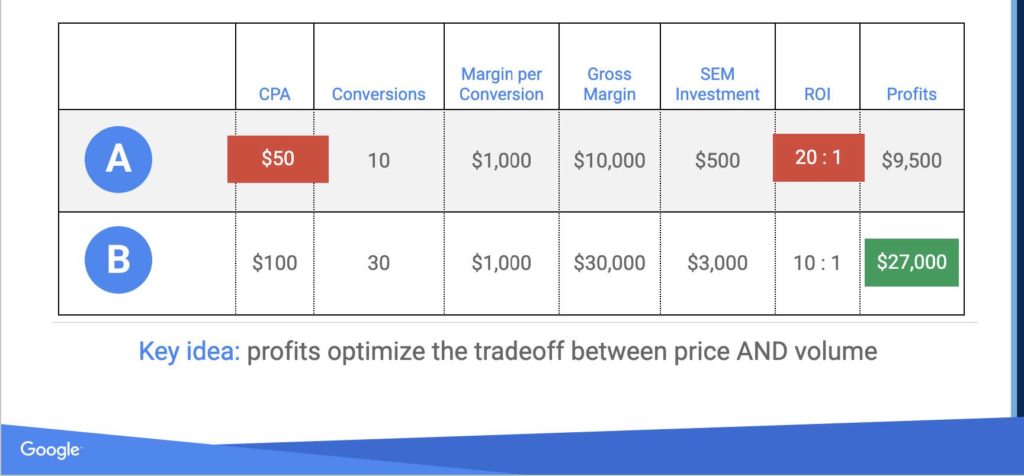Top 8 Marketing Measurement Mistakes
MEASURING MARKETING IS EASIER SAID THAN DONE
Measuring your marketing sounds easy enough, and everyone knows what gets measured gets managed, but there are several pitfalls when it comes to accurately measuring the performance and impact of your marketing program. Even the most seasoned marketers can fall foul of these pitfalls if they’re not careful. So, what are the top 8 mistakes when it comes to measuring your marketing?
1. NOT DOCUMENTING YOUR PRIMARY & SECONDARY KPIS
A macro-conversion or action that is particularly important for your business could be a lead form submission, a 1-minute or longer phone call or an online purchase. These should be documented as your primary KPIs. Less important actions or micro-conversions could be when someone searches for a location on your website or clicks a CTA (call to action) button (Add to Cart or Get Quote) but doesn’t follow through with a form submission, qualified phone call or purchase. It’s important to document and democratize your primary and secondary conversions so that everyone involved in executing and measuring your marketing program understands the goals and which metrics should be used to calculate CPA (Cost Per Acquisition) or CPL.
2. INCLUDING SECONDARY KPIS OR MICRO-CONVERSIONS IN YOUR CPA OR CPL
One mistake that we often see is that actions such as button clicks, or page views are being included in the CPL or CPA metric. Another flavor of this mistake is counting a separate set of actions as primary KPIs across media channels that have the same campaign objective. For example, in Paid Search, CPL is being calculated using one set of actions and in Paid Social (conversion objective campaign), it’s being calculated using a separate set of actions. This is not ideal and should be audited and corrected.
In Google Ads, you can easily see which conversions are being included in your Cost Per Conversion metric by going to Tools & Settings -> Measurement -> Conversions and making sure only your primary conversions are listed as Yes under Included in Account-Level Goals.
3. NO CALL TRACKING OR IMPROPER CALL TRACKING
Call tracking software identifies which marketing channel the caller came from and attributes their call to that channel so we can measure the impact of our multi-channel marketing efforts on incoming calls. We can use DNI (Dynamic Number Insertion) to show a phone number on the landing page that is unique to each channel using a predefined lookback window. For example, Jane clicks a YouTube ad and lands on your website. The phone number at the top of the page has been dynamically generated with a unique number for the YouTube channel. Jane decides not to click to call on this visit but just reads up on your service and exits the page. 3 days later, Jane returns to the landing page through an organic search. Because we have set a 30-day lookback window in our call tracking software, the YouTube channel phone number will be displayed at the top of the page so that we can still attribute YouTube as Jane’s converting touchpoint.
Even if you are leveraging a call tracking solution, it’s important to ensure this process is set up correctly and that you have filters in place to only count phone calls that meet certain criteria so that you are measuring qualified calls. Users that click to call but then hang up or who do not stay on the call long enough for it to be a qualified call, say 30 seconds, (this will vary on your business), should not be included in your call metrics.
Setting up and using call tracking analytics within your call tracking software will help you to identify search keywords that are driving the most qualified calls. It will also help you to generate transcripts of your calls so you can spot familiar words or phrases that are spoken on calls that lead to conversions and then label, tag and score calls based on these.
4. NO MONITORING OR VALIDATION SYSTEM FOR TRACKING
Once you have your tracking implemented and measuring correctly, you might be tempted to take a set-it-and-forget-it approach. In reality, tracking needs to be consistently and continually monitored to ensure that pixels are firing correctly. There are factors that can cause tracking to break. Changes to landing pages, tracking code, the Google tag Manager container, and other updates are common reasons for tracking to be disrupted resulting in inaccurate reporting and poor campaign optimization.
5. USING THE LAST CLICK ATTRIBUTION MODEL
Last click attribution only gives credit to the last channel in the consumer’s path to conversion. Realistically, this is not giving us a true picture of the impact of our multi-channel program. Imagine a hockey game where a goal is scored. Who gets credit for the goal? The right winger? The left winger? Or was it the defenseman moving the puck out of the zone? Or the center for skating the puck into the offensive zone? Each player who touched the puck should be given some level of credit for the final goal, right? The same principle applies to marketing attribution. There are preset attribution models such as Linear, Position-based, Time-decay etc. that are more realistic and applicable than Last-click (read more here), but we are proponents of using Data-driven attribution which is a unique model that gives credit for conversions based on how people engage with your various ads and decide to become your customers. It uses data from your account to determine which keywords, ads, and campaigns have the greatest impact on your business goals.

6. RELYING ON CPA & CPL METRICS OVER VALUE-BASED METRICS
While cost per acquisition and cost per lead are meaningful metrics to measure, moving to a value-based measurement framework will take you to the next level in driving optimal business outcomes through your marketing. Applying dollar values to your KPIs (these can be backed into using your Customer Lifetime Value, Gross Profit and Lead to Sales Rate) will help the ad tech platforms’ AI to find your higher-value customers and drive results that give you optimal long-term profit outcomes.

7. NOT LOOKING AT THE BIG PICTURE
Looking at performance metrics in channel siloes can be deceptive leading to double counting of conversions and incorrect attribution. Paid Search, especially Branded Paid Search, will typically show the lowest CPA/CPL and highest ROAS (return on ad spend) because it is often the last interaction in a consumer’s path to conversion and has click data to back it up.
Channels such as YouTube, Display and CTV (Connected TV) will likely report much higher CPA/CPL and lower ROAS because view-through conversions are not given enough credit. A prospect who viewed, not clicked, the ad and had brand recall which later made them search for the brand to convert is hard to measure unless you have a sophisticated attribution system.
Calculating your KPIs using your overall media spend and overall deduplicated conversions is a much better way to understand how your full-funnel program is working toward achieving your business goals.
Even better, is to have a sophisticated attribution engine that ingests all your media activity and shows omnichannel synergies and incrementality as well as using predictive metrics to forecast optimal media mix. Location3’s Attribution Engine does exactly this!
8. SACRIFICING SCALE FOR EFFICIENCY
Striving for a high ROAS over scale and volume can be a mistake. In the chart below, we can see that by investing more SEM (Search Engine Marketing) budget at a lower ROAS, we are able to drive significantly more profit for the business by maximizing scale and volume of available conversions. Scenario B shows how we make more profit on our marketing investment albeit at a lower ROAS.

Setting the foundation for a robust and rounded measurement system is a strategic imperative. Partnering with an agency like Location3 who is experienced in this discipline and seasoned at spotting the common pitfalls will give you confidence that you are checking all the boxes when it comes to on-point marketing measurement!
Stay In Touch.
Subscribe to our monthly email newsletter.
